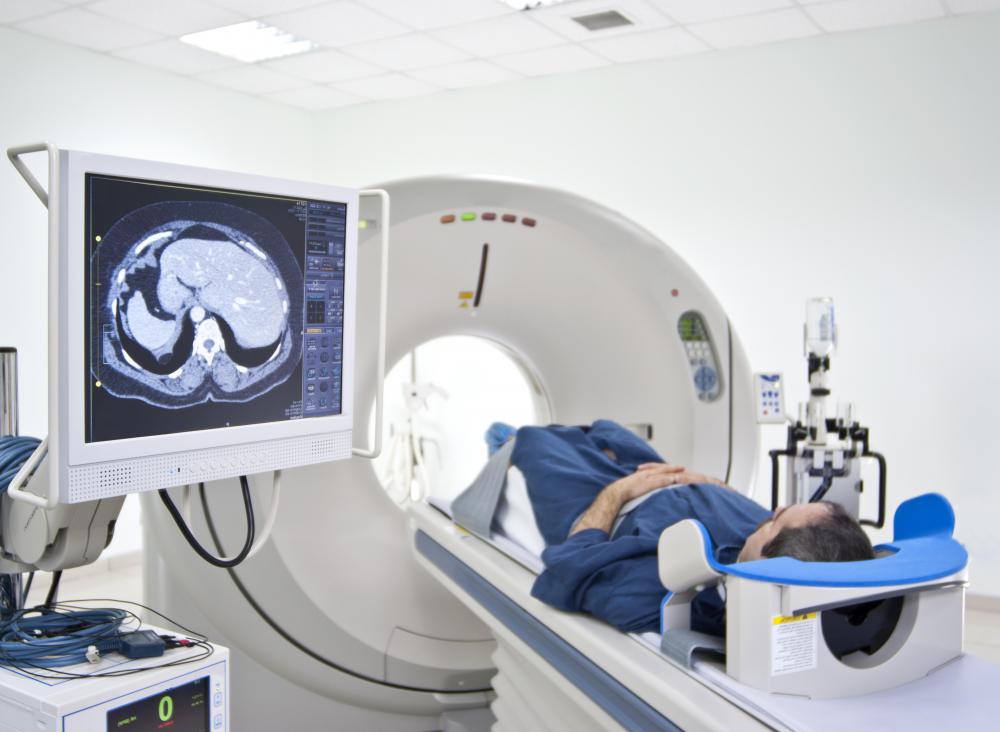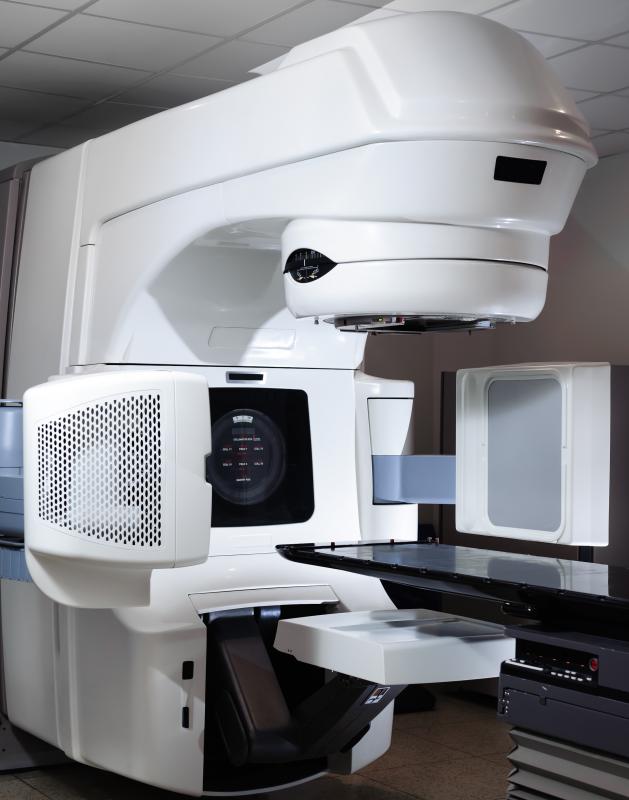At WiseGEEK, we're committed to delivering accurate, trustworthy information. Our expert-authored content is rigorously fact-checked and sourced from credible authorities. Discover how we uphold the highest standards in providing you with reliable knowledge.
What is a Pancreatic Cyst?
A pancreatic cyst is a collection of fluid that pools within the pancreas. When the cyst is a true cyst, the pool of fluid is surrounded by a layer of cells that secrete fluid into it. By contrast, pseudocysts, which are the most common type of cyst, are not surrounded by this cell layer. Most cysts in the pancreas cause no disease symptoms and are benign. If cysts grow large, they can cause abdominal pain, back pain, or jaundice. In some cases, a cyst can become cancerous.
The pancreas is a small organ located behind the stomach. Its main functions are the production of enzymes that aid in digestion and hormones that regulate blood sugar levels. The pancreatic duct, which extends the length of the organ, drains secretions into the small intestine for use during digestion.

There are multiple types of pancreatic cysts. Mucinous cysts contain mucus secreted by the cell layer surrounding the cyst and have the potential to develop into pancreatic cancer. Intraductal papillary mucinous neoplasms, which are mucinous cysts that form in the pancreatic ducts, have a higher risk of becoming cancerous than mucinous cysts located in the pancreas itself. A rare cyst called a solid pseudopapillary tumor of the pancreas can grow to large sizes; it also can become malignant.

Pseudocysts, which are almost always benign, are the most common type of cyst that develops in the pancreas. These cysts often form after an acute pancreatitis attack. Acute pancreatitis is a sudden inflammation of the pancreas, usually caused by gallstones, alcohol abuse, traumatic injury, or the use of certain prescription medications.
When a pseudocyst develops after acute pancreatitis, it tends to contain high levels of digestive enzymes, while those that develop because of other causes might contain different enzymes or other proteins. This is useful information when evaluating a cyst, because an analysis of the fluid inside it helps determine whether it has the potential to become malignant. When a cyst is solid, it is more likely to be cancerous than one that is filled with fluid.

Evaluation of a pancreatic cyst is carried out with medical imaging tests such as a CT or MRI scan and a biopsy of the fluid within it. The biopsy is obtained by passing a tool called an endoscope into the upper intestine via the mouth and stomach. This tool is used to take ultrasound images of the cyst and obtain a sample of the fluid from within it. Examining the cyst and its contents is generally enough to make a diagnosis.

Small, asymptomatic pseudocysts rarely require treatment, but they might be monitored for signs of growth. Larger cysts that cause pain or stomach obstruction, or which become infected, usually are removed via surgery. A cancerous or precancerous cyst usually is removed as soon as possible. When a cyst is cancerous, the surgery might be followed by chemotherapy or radiotherapy as a precautionary measure.
AS FEATURED ON:
AS FEATURED ON:

















Discussion Comments
@copperpipe -- Unfortunately, you've hit the nail on the head. That's why cancers in the abdominal cavity can be so hard to treat, since they are often diagnosed so late.
Since the abdominal cavity (and the organs in it) are not visible to the eye, oftentimes a tumor can grow to be quite a large size before it actually starts affecting the body to the point where the person notices it.
The same applies for cysts. In the case of a pancreatic cyst, people can live with them for years before they start causing problems.
To answer your question, one of the ways that they figure out the difference once a lump is found is by a biopsy. In the case of a pancreatic cyst, a fluid analysis will be performed on samples removed from the cyst, which can tell the doctors more about what's going on.
If cancerous cells show up in the biopsy, then of course another course of treatment would be recommended.
Excellent question, though -- I can tell you really know a lot about abdominal issues. And great article too -- this really did provide an excellent overview of pancreatic cysts without being either too technical or too sensationalist.
My husband was recently told that he was at risk for getting a pancreatic cyst, but we were kind of confused as to what the doctor actually meant.
Can you tell me how anybody can be at risk for getting a cyst? He did have a kidney cyst a while back, but since we got that cleared up he's been doing really well. So do you think he's really at risk for a pancreatic cyst, or if the two could possibly be related.
I would just really appreciate any extra information you could give me on the subject -- we're really just kind of confused right now.
Thanks.
How can you tell the difference between a pancreatic cyst and a pancreatic tumor? Do they behave at all differently; are there different symptoms?
For instance, I know that it can be really difficult to tell the difference between a cyst on the liver and a tumor on the liver, or a renal cyst and a renal tumor. In fact, I've heard that it's really hard to tell the difference between cysts and tumors on the organs in general.
Does the same hold true for pancreatic cysts?
Post your comments